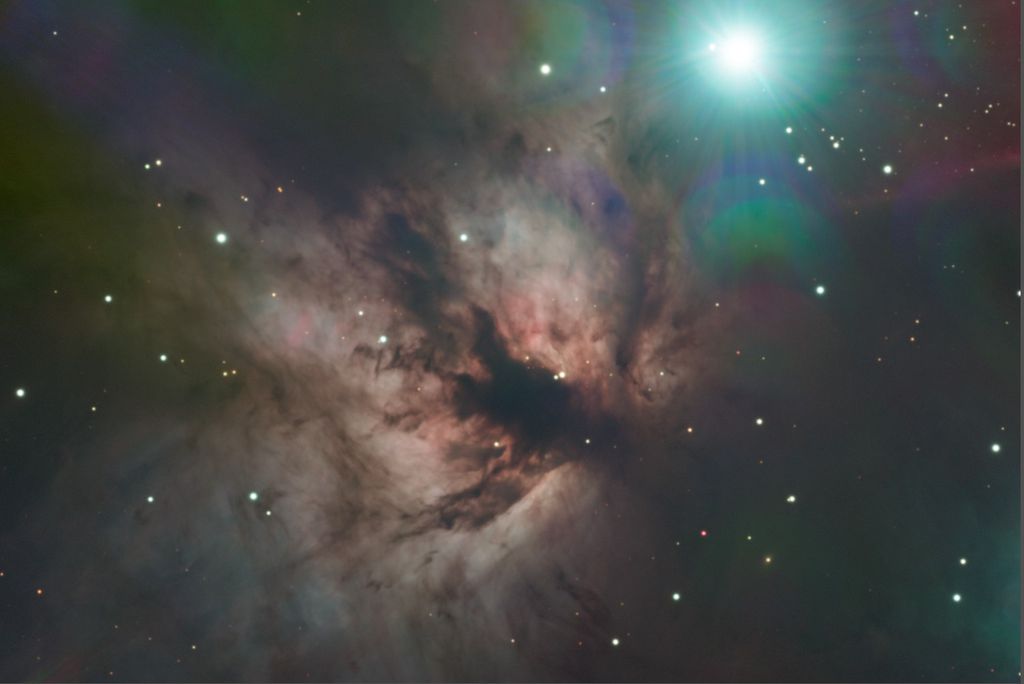Lots of careful masking is how I'd approach it:
- Gradient correct, background extract, color correct, and stretch how you'd normally stretch.
- Open SetiAstro's Freehand Adaptive Mask Editor (FAME) script.
- Utilize the freehand mask option and I'd probably select the "lightness" mask option over the "binary" option, and set the blur to about 10-15.
- Mask each color reflection individually and repeat the process for each color. (You can do multiple individual masks with the FAME tool, so mask all the reflections with the same color at a time.) Generate the mask.
- Hover over one of the reflections and look at the RGB levels on the bottom information bar. It should tell you the intensity of each color. Open the curves tool, and play around. Make sure the real time preview window is open so you can see how changes you make affect it. If it's a red reflection, open the Red curve, and make some reductions around the level that the information bar indicated. You may also need to make minor adjustments to Gand B to get the color balance you want. Eventually you should be able to find a level adjustment that helps it blend in to the area around it without reflections.
- Repeat for the other colors.
Note that You may need to mask each color of each individual reflection as they may not be uniform in intensity.
I would handle the bright reflection on the top left corner the same way, but I might wait until I've stitched together the mosaic to do it, so it's easier to balance it with the data in the other panels. I suppose the same could be said for Alnitak's reflections too, since we're only seeing 3 of what I presume to be 4 reflections on Alnitak.
I went through this exercise to patch up some nasty gradients on one panel of my M33 HOORGB mosaic. Not sure what happened with flats in the stacking process (the other panel was perfect), but gradient correction didn't fix it, so I had to make this type of an adjustment for the final corrections.
Lots of time and patience will be needed for this, so be patient and don't hesitate to take a break and start the process over if needed! I did about 5 times!
Good luck!



